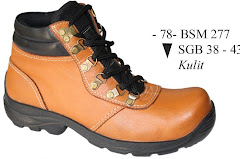Somewhere,
Sometime,
The Leader within
Each of US
May GET
The Call
Pemimpin sukses dinilai:
1. Prestasi atasan meningkat
2. Moral employee bagus, kepuasan bawahan
3. Prestasi unitnya
4. Prestasi organisasi scr keseluruhan
Somewhere,
Sometime,
The Leader within
Each of US
May GET
The Call
Pemimpin sukses dinilai:
1. Prestasi atasan meningkat
2. Moral employee bagus, kepuasan bawahan
3. Prestasi unitnya
4. Prestasi organisasi scr keseluruhan
Pemimpin Sukses:
- Skills: kemampuan teknis
- Behaviour: tingkah laku
- Attitude: kemampuan utk bertahan
Legacy: ketika memimpin bagus, ketika turun juga dikenang bagus
The effective management skills:
1. ability to manage different
2. ability to manage change-diversity
3. being a strategy/visionary manager
4. ability to motivate
5. decisive - quickness of action
1 3 4 7 12 15
- komunikasi personal
- strategic view
- ability to motivate
- being able to see the organization as a whole
- ethical/spiritual orientation, - integrity
humble: pemimpin yg melayani
Siapa yg menulis tentang leadership nilai A
Skills:
- communication
- conflict management and negotiation
- delegation
- ethical behaviour
- listening
- motivation
- performance appraisal dan feedback
- planning and goal setting
- power and influences
- presentation and persuasion
- problem solving and decision making
- stress management
-
-
Behaviour and Attitude
- Leadership Studies Time Line
1930s: trait theories (leader selection):hy yg besar, tangannya tinggi
1960s: behaviour theories (leader training), bisa dipelajari, dididik dan diubah
1980s: contingency theories (Leader situation matching): berdasarkan keadaan
--sekarang: karismatik leader
Leader's traits (thn 30-an):
- Physical Height
- Others :
- Intelligence
- Task-Relevant Knowledge
- Dominance
- Self-Confidence
-
40 - 60 -an:
- Orientasi kpd manusia
- Orientasi pada tugas
- ->sering dilakukan tp gagal , dan akhirnya semua dikerjakan sendeiri
Manager vs Leader
-Planning and budgeting <> Setting a direction
-Organizing and Staffing <> aligning people
-Controlling and problem solving <> motivating and inspiring
#Leader:produce change
#Manager:manage complexity
Direction setting --> produce visions and strategy, describe: business, technology and corporate culture
Aligning People Vs Organizing and Staffing
-->interdependence? no one complete autonomy, tied to their work, technology, managemnet system, and hirarchy
-->Manager:"Organize" , create human system that can implement plans as precisely and efficiently as possible
--> requires potencially complex decisions:
1. choose a structure of jobs and repoting relationships
2. staff it with individual suited to the job
3. communicate plans to the workforce
4. decide how much authority to delegate and to whom
5. construct economic incentives to accomplish the plans
6. construct as well as system to monitor its implementation
--> all of these like architectural decisions
-->Leader:"Aligning"
1. more of communication challenge than a design problem
- talkong more to many more individuals than organizing does
- target population not only a manager's subordinates,
- but also bosses, peers, staff in other part of organization, suppliers, government officials and
customers
- anyone who can help implement the vision and strategies and who can block implementation.
- trying to get people to comprehend a visions
2. credibility, getting people to believe the message
- track record of teh person delivering the message
- the content of the message itself
- the communicator's reputation for integrity and trustworthiness
- consistency between words and deeds
--> aligning leads to empowerment in a way that orginizing rarely does.
The Fact: many people feel relatively powerless
- Alignment helps overcome this problem by empowering people in at least two ways:
1. lower-level can initiate actions and superior can't reprimanding them because already in the right
direction with vision
2. probability is less that one's person initiative will be stalled
Aligning People: Chuck Trowbridge and Bob Crandall at Eastman Kodak
Vision for Engineering and Manufacturing:
- to become a world-class manufacturing operation
- to create a less bureaucratic and more decentralized organization
The dozens of vehicles:
1. weekly meetings with his own 12 direct reports;
2. monthly “copy product forums” in which a different employee from each of his departments would meet with
him as a group;
3. discussions of recent improvements and new projects to achieve still better results
4. quarterly “State of the Department” meetings,where his managers met with everybody in their own
departments
-->The goal: to get all of his 1,500 employees in at least one of these focused business meetings each year.
5. Trowbridge and Crandall also enlisted written communication in their cause.
- A four - to eight-page “Copy Products Journal”was sent to employees once a month.
- A program called “Dialog Letters”
- gave employees the opportunity to anonymously ask questions of Crandall and his top managers and be
guaranteed a reply
Results :
- Between 1984 and 1988, quality on one of the main product lines increased nearly 100-fold
- Defects per unit went from 30 to 0.3.
- Over a three-year period, costs on another product line went down nearly 24%
- Deliveries on schedule increased from 82% in 1985 to 95% in 1987
- Inventory levels dropped by over 50% between 1984 and 1988, even though the volume of products was
increasing.
- productivity,measured in units per manufacturing employee,more than doubled between 1985 and 1988.
Tugas Bisnis Leadership:
1. Siapkan Project atau Tokoh Pemimpin yg anda kagumi utk segera diwawancara dan laporkan hasilnya dlm bentuk
paper (dikumpul saat UTS? UAS?)
2. Minggu ini tugas mengisi Kuisioner terkait posisi Anda dan lingkungan yang mempengaruhi karir anda (1 hari
sebelum masuk) ke : yuniroos@sbm-itb.ac.id; fajarprie_021@yahoo.com
Kamis, Februari 18, 2010
What The Leader Really Do..?
Langganan:
Posting Komentar (Atom)









 Open all
Open all Close all
Close all
Tidak ada komentar:
Posting Komentar